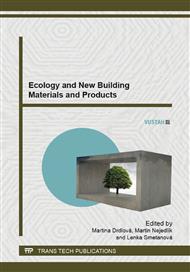p.219
p.223
p.227
p.231
p.235
p.239
p.243
p.247
p.251
Pore Structure Analysis of Portland Cement and Blended Portland Cements Cured under Hydrothermal Conditions
Abstract:
The pore structure of Portland cement pastes cured under different hydrothermal regimes was analyzed. Pore size distribution (PSD), hydraulic permeability coefficient (HK) and porosity (P) were found depending on temperature and steam pressure. With increasing hydrothermal characteristics, the pore structures degraded causing the depletion in compressive strength. Then, blast furnace slag (BFS) and silica fume (SF) were added to PC and cured under similar conditions. It was found that the pore structure was greatly improved. The effect of hydrothermal curing may be interpreted by the intensity and position of the peak, by the length and bimodal characteristic of PSD. The maximum concentration of pores of reference cement paste lies in the range 10 – 103 nm, and changes progressively to the size < 10 nm with increasing addition of BFS and SF. This behavior is attributed mainly to the presence of SF. Microstructure analysis shows hydrate products like needle CSH and CASH, which were stable under hydrothermal curing.
Info:
Periodical:
Pages:
235-238
Citation:
Online since:
August 2014
Keywords:
Price:
Сopyright:
© 2014 Trans Tech Publications Ltd. All Rights Reserved
Share:
Citation:


